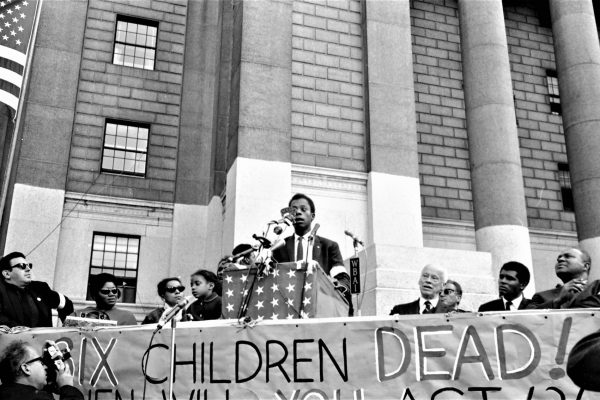The war on drugs is one of the most ill-conceived, racist, and harmful government initiatives of the past half century. Yet it was also very effective—just not in the way its proponents claimed. The successes have been in politics, not in public health. By all indications, the health challenges presented by drug abuse today are as bad as they have ever been. But over this same period, the Republican Party has effectively reconfigured itself as a party of white racial backlash against the relatively progressive racial and economic policies of the Great Society and the New Deal. From Nixon’s Southern Strategy to Reagan’s states’ rights speech at the Neshoba County Fair and Donald Trump’s entire campaign and administration, Republicans have leveraged white racial resentment to shift political narratives and claim power at all levels of government.
Donna Murch convincingly connects Trump’s racist ramblings about the opioid crisis and immigration to a much broader field of racialized (and racist) rhetoric and policy that has informed the U.S. government’s approach to managing licit and illicit drugs in this country for over acentury. But while that history has deep roots in our political institutions and in the capitalist structure of the drug market, it is important to highlight the distinctiveness of the current era.
Murch speaks, for example, of the “paradoxical relationship between a racialized regime of illegal drug prohibition and a highly commercial, laissez-faire approach to prescription pharmaceuticals.” There is certainly a relationship here, but why is it “paradoxical”? A racist system’s denial of its racism does not render it paradoxical. To the contrary, a denial of racism is wholly consistent with how racism works. It is even, one might say, the predominant rhetorical technique of racism in our supposedly “post-racial” time.
Consider the phenomenon of what might be called “race exhaustion” in U.S. history. By this I mean the common complaint that it is finally time to stop playing the race grievance card. Slavery is long gone; Jim Crow is dead; it is time to move on. This argument has been around as long as there have been post-slavery civil rights laws. In 1883, while striking the Civil Rights Act of 1875, the Supreme Court declared, “When a man has emerged from slavery, and, by the aid of beneficent legislation, has shaken off the inseparable concomitants of that state, there must be some stage in the progress of his elevation when he takes the rank of a mere citizen and ceases to be the special favorite of the laws.”
As in 1883, when the passage of a mere eighteen years was deemed sufficient to eradicate the legacy of centuries of slavery, so too in 2013, as Justice John Roberts struck down key portions of the 1965 Voting Rights Act in Shelby v. Holder because “things have changed dramatically” since it was enacted. Those resisting racial progress are always pleading some form of race exhaustion and seeking to consign racism to an irrelevant past. It was this attitude that Lyndon Johnson firmly rejected in 1965 in his commencement address at Howard University. “You do not take a person who, for years, has been hobbled by chains and liberate him,” he said, “bring him up to the starting line of a race and then say, ‘you are free to compete with all the others,’ and still justly believe that you have been completely fair.” While it is a mistake to view Johnson as some sort of white savior, his forceful distinction between “equality as a right and a theory” and “equality as a fact and equality as a result” helps to explain why the relationship at the heart of Murch’s analysis is not paradoxical so much as it is pathological.
Racism endures, then, even as it takes on different forms. And it is not always easy to recognize its manifestations in one’s own time. Understanding this is essential to understanding the persisting influence of racism in our society, which Murch masterfully exposes. It is also important to understand that such manifestations are not monolithic. While Murch is right that Democrats are hardly blameless, the contemporary racism she identifies has a distinctively Republican provenance. After all, the liberals on the Supreme Court vigorously dissented in Shelby v. Holder, and it has largely been Democratic governors and attorneys general who have been filing lawsuits against the Trump administration to challenge such racist actions as the Muslim Ban and declaring a national emergency to fund the border wall.
In parsing the broad concept of racial capitalism in relation to U.S. law and policy, it is useful to consider Murch’s analysis alongside the work of legal scholars Nancy Leong and Cheryl Harris. Leong defines racial capitalism more particularly as “the process of deriving social and economic value from the racial identity of another person.” She is especially interested in the way “white individuals and predominantly white institutions use nonwhite people to acquire social and economic value” in the context of programs such as affirmative action and diversity hiring, which recognize marginalized identities as desirable in order to reap both material and symbolic dividends. Harris provides a complementary frame in her essay “Whiteness as Property,” which reaches back to the 1896 case of Plessy v. Ferguson to examine the ways whiteness has literally been capitalized to provide value in forms ranging from reputation to real estate. Part of Homer Plessy’s original suit involved a claim that, because he was an “octoroon”—one-eighth black—forcing him to sit in a blacks-only car deprived him of the reputational value accorded by the seven-eighths of him that was white. Few realize today that during the early twentieth century many states recognized a tort of racial defamation, whereby a white plaintiff could claim injury for being improperly called black.
All of this is to say that racial capitalism involves more than a capitalistic system built on racial oppression. It has taken on distinct and particular forms in different eras. The forms identified by Leong and Harris contrast with the prevailing politics of Trump’s new Republican party. Unlike Leong’s racial capitalism of affirmative action (which exploits people of color as symbolic goods) and Harris’s notion of whiteness as property (which exploits the positive value of white racial identity), the racial capitalism of Trump’s War on Drugs is negative, exploiting communities of color as scapegoats and foils. It invokes tropes of Mexican invaders as a means to distract from the sins of Big Pharma in facilitating the opioid crisis. Race thus takes on a new kind of capital value: scapegoating Mexicans protects pharma’s capital by cleansing it of responsibility. And this new racialized scapegoat is made to bear not only the burden of imputed sin, but also the burden of government surveillance, oversight, and incarceration. The “value” of racism here lies not in extracting labor from subordinated bodies, and not solely—as Murch shows in the case of racialized prescription drugs—in creating addicted consumers and capturing racial markets. It also lies in diversion.
Of course, scapegoating is an ancient practice. And specifically racial scapegoating in the United States has a long and sordid past, most clearly evident today in the lynchings commemorated by the solemn steel rectangles hanging from the ceiling of the National Memorial for Peace and Justice in Montgomery. Purdue Pharma has scapegoated its victims by trying to blame them for their addiction. In this context, what makes the old new again is Trump’s explicit appeal to race, not simply in the service of white supremacy, but additionally and directly in the service of corporate supremacy. Here, perhaps, is where we see racism and capitalism most completely intertwined in this story.








